Creating custom clothing labels is a captivating endeavor that adds a personal touch to your garments. These labels not only serve as identifiers but also reflect your brand identity or individual style.
Crafting clothing labels allows you to infuse creativity and uniqueness into your apparel, making them stand out in a crowded fashion landscape.
Whether you’re a fashion designer, a small business owner, or simply a DIY enthusiast, learning how to make clothing labels opens up a world of possibilities.
In this guide, we will explore the various methods and materials you can use to design and produce custom clothing labels, enabling you to add that distinctive finishing touch to your clothing creations.
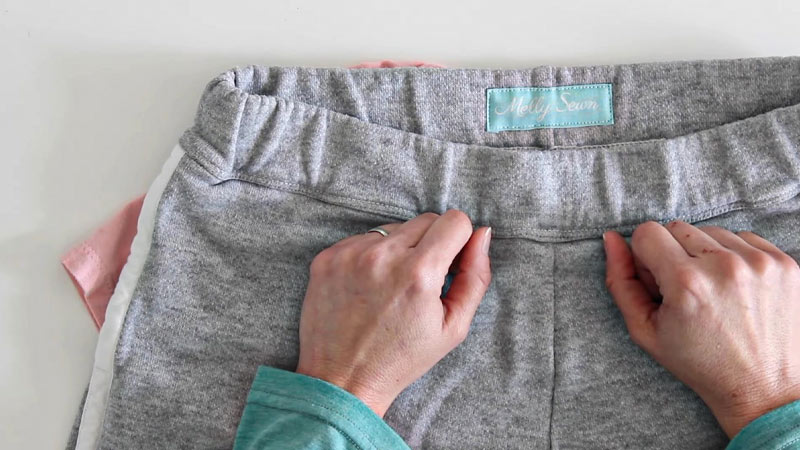
10 Steps to Make Clothing Labels or DIY Clothing Tags
Making clothing labels is a creative and important aspect of the fashion and garment industry. These labels serve multiple purposes, such as conveying branding, providing care instructions, and indicating size.
Creating your own clothing labels can add a personal touch to your designs or clothing line.
Here’s a step-by-step guide on how to make clothing labels:
Materials and Tools You’ll Need:
- Label Material
- Design Software
- Printer
- Label Size
- Ink or Fabric Paint
- Scissors or Rotary Cutter
- Sewing Machine or Needle and Thread
Steps to Make Clothing Labels:
Step 1: Determine Label Specifications

In this initial step, you need to decide on the specific details of your clothing labels. Determine what information you want to include on the labels.
This can range from your brand name or logo to size information, care instructions, and any other relevant details.
Additionally, choose the appropriate material for your labels, taking into account factors such as durability and how well it complements your clothing.
Step 2: Design Your Labels
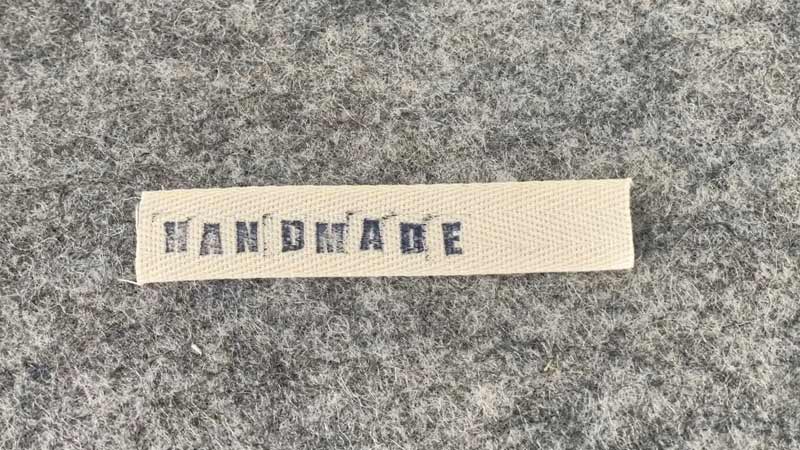
Creating an eye-catching and brand-appropriate label design is crucial. Your labels should not only be functional but also aesthetically pleasing. Think about your brand’s identity and style, and incorporate these elements into the design.
Use graphic design software to craft the labels, carefully selecting fonts, colors, and graphics that align with your brand’s image and message.
Step 3: Choose Materials
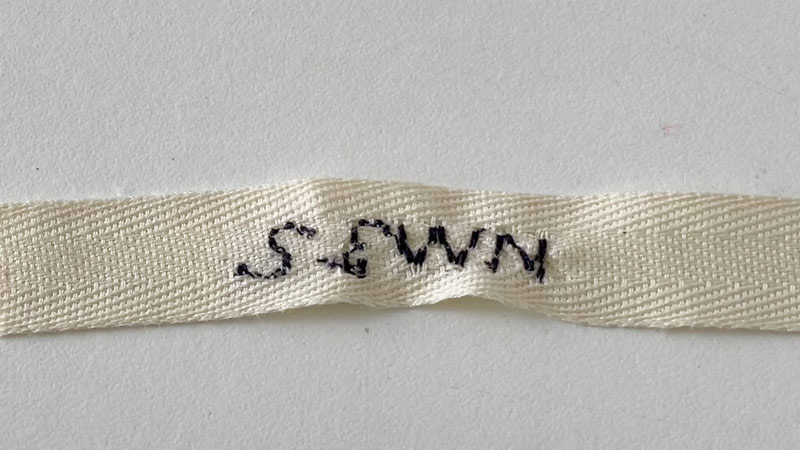
The choice of materials for your clothing labels is essential for both aesthetics and durability. Consider the type of fabric or material you want to use, and make sure it can withstand washing and wear.
If you’re opting for woven labels, select the appropriate fabric type and color that complements your label design.
Step 4: Print or Weave Labels
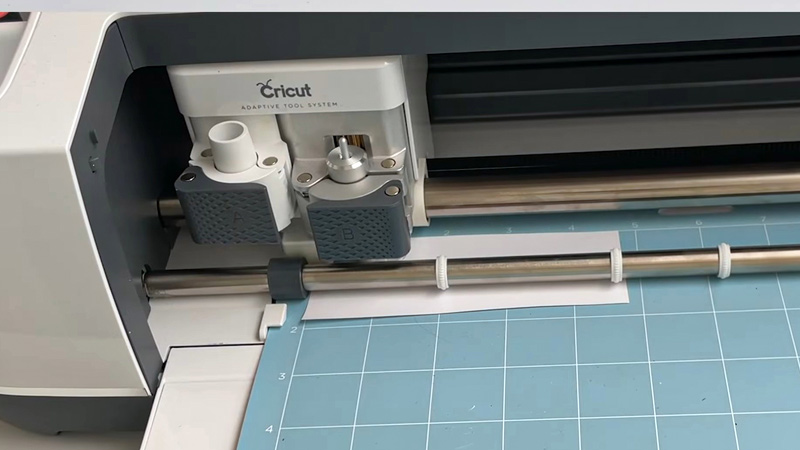
Depending on your label type, you will either print or weave your labels. For printed labels, use high-quality label paper and ensure your printer settings are optimized for this purpose.
If you’re opting for woven labels, you may work with a professional label manufacturer or invest in a weaving machine for larger-scale production.
Step 5: Cut and Fold Labels
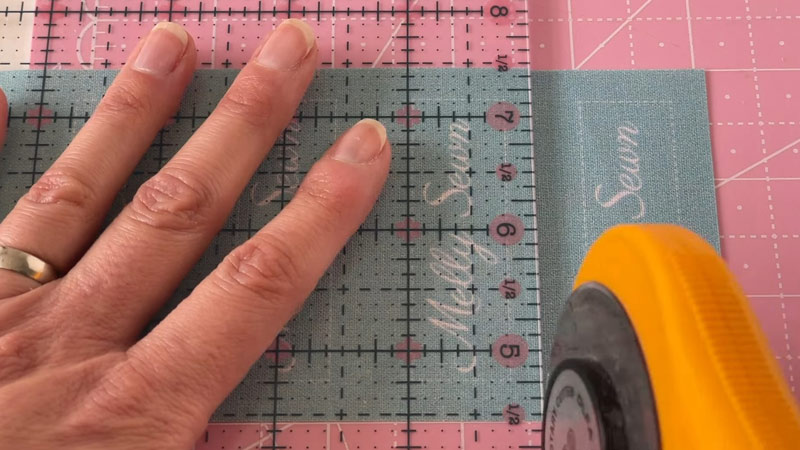
Once your labels are printed or woven, precision is key when it comes to cutting and folding.
Use sharp scissors or a rotary cutter to cut the labels neatly, ensuring straight edges and uniform sizes. If your labels require folding to fit your design, fold them along designated lines with care.
Step 6: Sew or Attach Labels
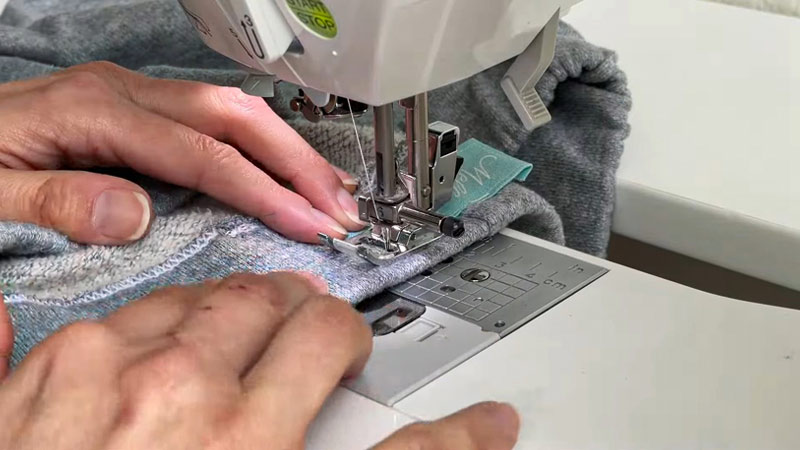
You have the choice of either machine-sewing or hand-sewing your labels onto your garments. Machine sewing is efficient for larger quantities, while hand-sewing adds a more personalized, artisanal touch.
Take your time to position the labels accurately on the garments, making sure they are straight and securely attached.
Step 7: Finishing Touches
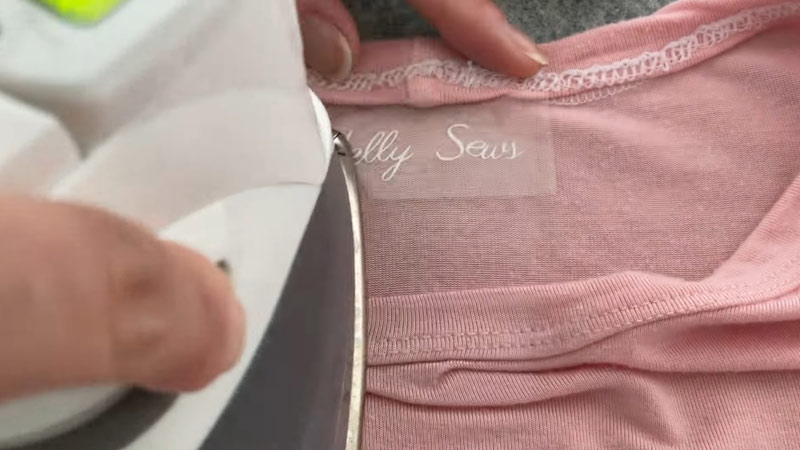
After sewing, you may need to address any wrinkles or creases that have formed during the attachment process. Use a low-temperature iron and a pressing cloth to gently remove imperfections.
Inspect each label carefully to ensure they are correctly attached and free from any loose threads or irregularities.
Step 8: Label Care Instructions
If applicable, include care instructions on your labels. These instructions can be in the form of care symbols or written guidelines, specifying how customers should wash, dry, iron, and care for their garments properly.
Step 9: Quality Control
Before your clothing items are ready for sale or distribution, conduct a thorough quality control check. Examine each label to ensure it is correctly placed, securely attached, and free from any defects or issues.
Step 10: Promote Your Brand
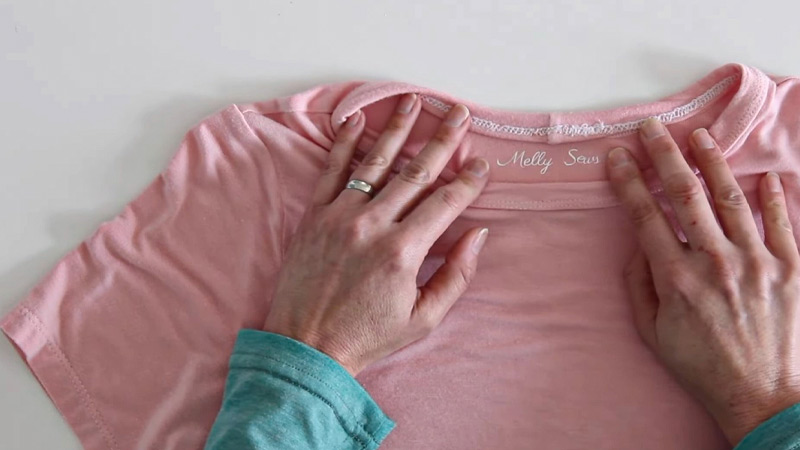
Finally, make the most of your custom clothing labels by incorporating them into your brand’s marketing strategy.
Display your labels prominently on your website, social media profiles, and promotional materials to enhance brand recognition and customer loyalty. Your labels should become a key element of your brand’s identity and image.
Why Do You Need to Make Clothing Labels?
Clothing labels serve a pivotal role in the fashion industry and garment-making process. These small, often overlooked tags play a crucial part in conveying information, establishing brand identity, and ensuring customer satisfaction.
Let’s delve into why clothing labels are a necessity:
Brand Identity
Clothing labels are a powerful branding tool. They display your brand name, logo, or emblem, helping customers identify your products immediately. Consistent labeling reinforces brand recognition and trust.
Professionalism
Well-designed and professionally crafted labels add a level of sophistication to your garments. They demonstrate your commitment to quality and attention to detail, which can positively influence customer perceptions.
Information
Labels provide vital information, such as size, care instructions, and fabric content. This information helps customers make informed purchasing decisions and ensures proper garment care, reducing the risk of damage or dissatisfaction.
Legal Requirements
Many countries have regulations mandating certain label information on clothing, including care instructions, fabric content, and country of origin. Complying with these regulations is crucial to avoid legal issues.
Marketing and Promotion
Clothing labels can be an integral part of your marketing strategy. They serve as a subtle yet effective promotional tool, reinforcing your brand’s image and message.
Differentiation
Custom clothing labels set your products apart from generic or mass-produced items. They add a unique and personal touch to your garments, making them stand out in a competitive market.
Customer Loyalty
When customers recognize your label and associate it with quality and satisfaction, they are more likely to become loyal repeat buyers. Labels can help build long-term customer relationships.
Professional Finish
Labels contribute to the overall professional finish of your garments. They convey a sense of completeness and attention to detail, which can make a significant difference in the perceived value of your products.
Organized Inventory
For businesses, labels play a crucial role in managing inventory. They help track product information, sizes, and variations efficiently, making inventory management smoother.
Customization
Clothing labels allow for creativity and customization. You can design labels that align with your brand’s aesthetics, choose materials that match your garments, and even create limited-edition or special collection labels to differentiate products.
What Clothing Label Regulations Should You Consider?
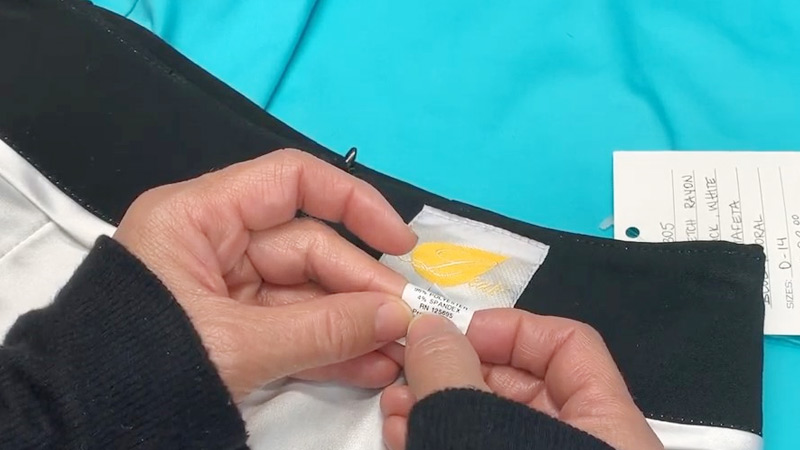
When creating clothing labels, it’s essential to be aware of and adhere to various regulations and legal requirements.
These regulations ensure that the labels provide accurate and necessary information to consumers while also addressing issues related to safety, fair trade, and environmental concerns.
Here are some key clothing label regulations you should consider:
Fiber Content
Specifying the fiber content of garments is a vital requirement in many countries. This regulation ensures transparency and helps consumers make informed choices based on their preferences, allergies, or sensitivities.
For manufacturers and designers, accurately listing fiber content is essential not only for compliance but also for building trust with customers.
Care Instructions
Clear and accurate care instructions are crucial for maintaining the quality and longevity of clothing. Care labels guide customers on how to wash, dry, and care for their garments properly, preventing damage or premature wear.
Providing easy-to-follow care instructions also reduces the likelihood of customers mishandling their clothing and subsequently being dissatisfied.
Country of Origin
Some countries mandate that clothing labels indicate the garment’s country of origin. This requirement helps consumers assess product quality, make ethical purchasing decisions, and support local industries.
Compliance with this regulation provides transparency and builds confidence in the origin and manufacturing practices of your clothing.
Size Labels
Consistency and accuracy in size labels are paramount. Inconsistent sizing can lead to customer frustration, returns, and a negative shopping experience.
Ensuring that size labels accurately represent the garment’s dimensions is not only a regulatory requirement in many places but also a fundamental aspect of customer satisfaction and brand reputation.
Safety Standards
Depending on the intended use of your clothing, compliance with safety standards may be mandatory.
For instance, children’s clothing often falls under strict safety regulations, and labels may need to include safety warnings or certification symbols indicating compliance with relevant safety standards.
It’s crucial to thoroughly research and adhere to these standards to ensure the safety of consumers, especially young children.
Eco-Friendly Labels
If you market your clothing as eco-friendly, sustainable, or organic, your labels should accurately reflect these claims. Ensure that the materials used for your labels align with your sustainability goals.
Misleading eco-friendly labeling can not only result in legal issues but also harm your brand’s reputation.
Textile Act
In the United States, the Textile Fiber Products Identification Act requires proper fiber content labeling, including generic names for fibers and labeling of manufactured fibers.
Complying with this act is essential to provide consumers with accurate information about the composition of your clothing items.
Trademark and Branding
While creating labels that represent your brand is crucial, it’s equally important to avoid infringing on trademarks and copyrights.
Conduct thorough trademark searches to ensure your branding elements, such as logos and graphics, do not violate intellectual property rights. Legal issues related to trademark infringement can be costly and damaging to your brand.
Label Placement
Regulations may specify where labels should be placed on the garment. Proper label placement ensures that consumers can easily find essential information.
Incorrect placement can result in non-compliance and may lead to consumer confusion or dissatisfaction. Be sure to follow the prescribed guidelines for label positioning.
Label Durability
Labels must remain legible and durable throughout the garment’s lifespan. This means they should be securely attached and resistant to fading, peeling, or falling off, even after multiple washes or exposure to various environmental conditions.
Durable labels ensure that care instructions and other essential information remain accessible and useful to customers.
Customs Requirements
Exporting clothing to different countries comes with unique labeling requirements. Each destination country may have specific rules and regulations regarding clothing labels.
These regulations can include language requirements, size and placement of labels, and even the use of specific symbols or warnings.
It’s essential to thoroughly research and understand the labeling requirements of the countries you’re exporting to.
Failure to comply with these regulations can lead to customs issues, including delays in shipments, fines, or even rejection of your products at the border.
Consumer Protection Laws
Consumer protection laws vary from region to region but generally aim to safeguard consumers from deceptive practices and ensure transparency in product labeling and advertising.
Familiarize yourself with the consumer protection laws in your specific region or the regions you’re selling to.
These laws may address issues like false advertising, misleading labeling, or unfair trade practices. Compliance with these laws not only helps you avoid legal troubles but also builds trust with your customers.
Flammability Standards
Flammability standards are especially critical for certain types of clothing, such as children’s sleepwear. These standards are designed to reduce the risk of clothing catching fire easily.
Labels on clothing that falls under these regulations may need to include flammability warnings or certification symbols indicating compliance with specific flammability standards.
Ensuring that your clothing meets these standards and includes the required labels is essential for safety and legal compliance, particularly when manufacturing or selling garments intended for children.
FAQS
Can I Make Eco-Friendly Clothing Labels?
Yes, you can! Consider using sustainable materials like organic cotton, bamboo, or recycled fabrics for your labels.
How Do I Incorporate RFID Technology into Clothing Labels?
You can integrate RFID (Radio-Frequency Identification) technology into clothing labels for inventory management or anti-counterfeiting purposes.
What Regulations Apply to Clothing Label Design?
Various regulations govern clothing label design, including care label requirements and country-specific labeling laws.
Can I Make Labels with Embedded QR Codes?
Absolutely. QR codes on clothing labels can link to product information, care instructions, or even interactive experiences.
Is It Possible to Make Labels for Limited-Edition Collections?
Yes, you can create special labels for limited-edition clothing collections.
To Recap
The art of crafting clothing labels is a meticulous yet rewarding endeavor. These labels transcend mere practicality, becoming a canvas for brand identity or personal expression.
By carefully considering label specifications, design elements, and materials, you can ensure that your labels not only provide essential information but also reflect your unique style or brand image.
Whether you choose printed or woven labels, the attention to detail in cutting, sewing, and attaching them is paramount. The incorporation of care instructions adds value and customer satisfaction.
Ultimately, clothing labels serve as the finishing touch, elevating your garments from ordinary to exceptional and leaving a lasting impression on those who wear and admire your creations.
Leave a Reply